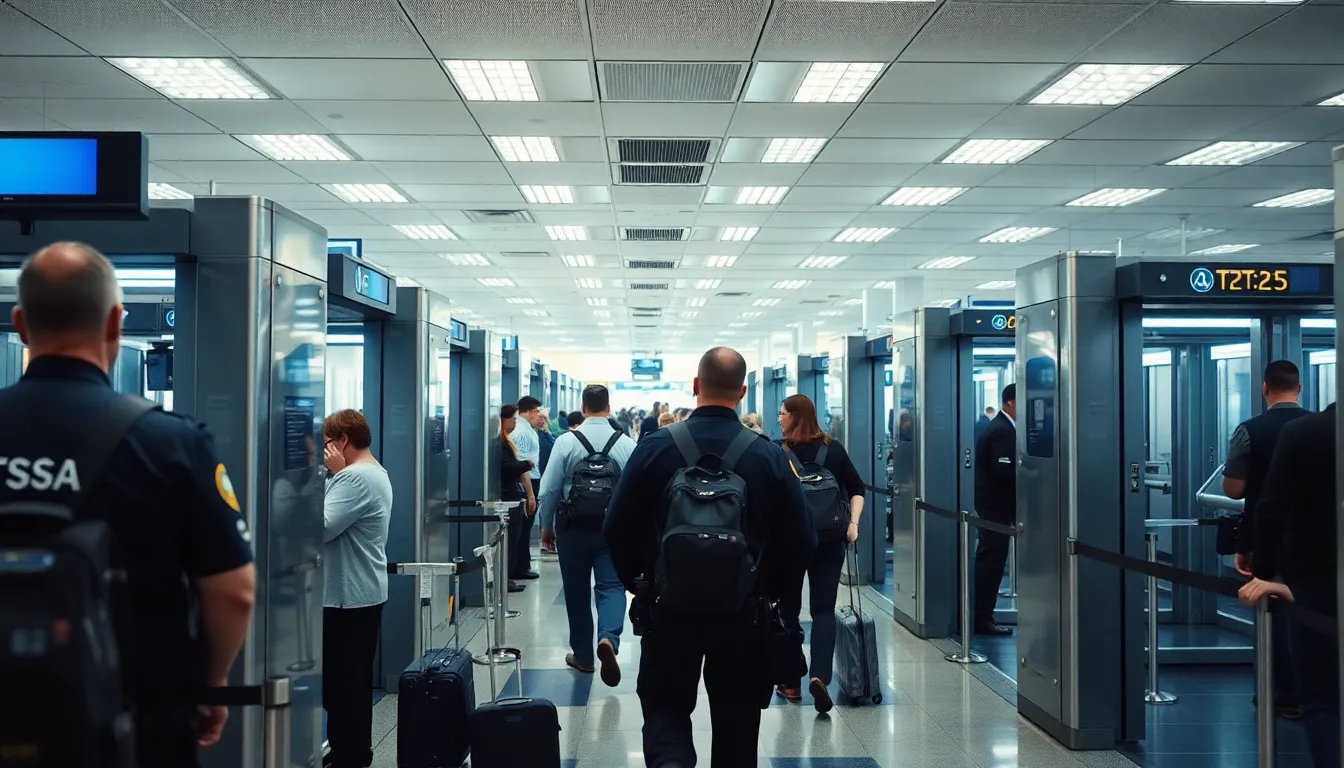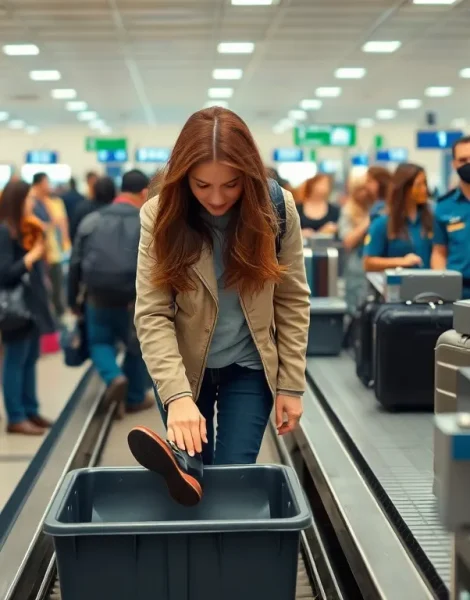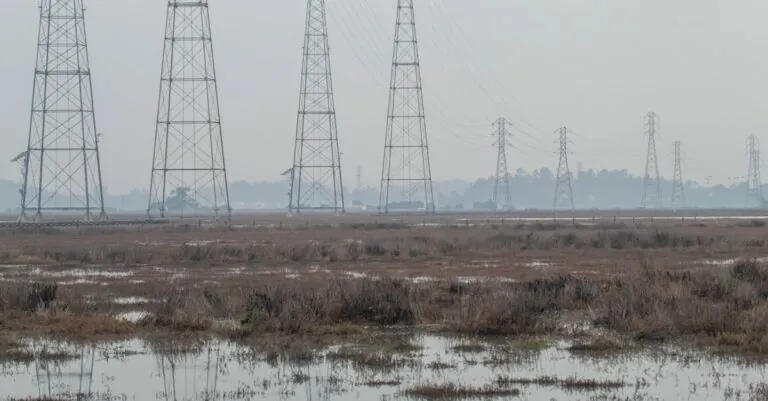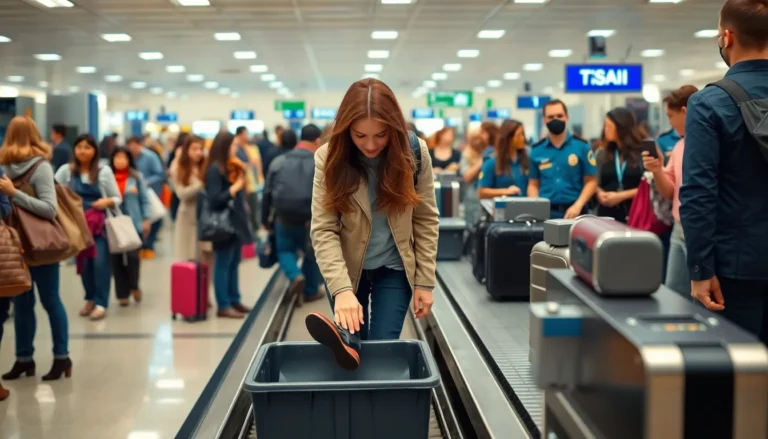Picture this: you’re racing through an airport, coffee in one hand, suitcase in the other, only to hit the dreaded security checkpoint. It’s like stepping into a game show where the prize is getting to your gate on time. Security checkpoints are the unsung heroes of travel, ensuring safety while testing patience and the limits of one’s ability to remove shoes in record time.
Table of Contents
ToggleOverview Of Security Checkpoints
Security checkpoints play a vital role in ensuring the safety of air travel. They serve as key barriers against potential threats, both at airports and other public venues. Passengers encounter these checkpoints post-ticketing, where officials monitor for prohibited items and validate identification.
In airports, the process generally involves several steps. Travelers remove their shoes, belts, and jackets before stepping through metal detectors. Bins are provided to hold personal items like laptops and liquids, which must fit within designated size limits. Screening technology, such as body scanners and X-ray machines, aids staff in identifying any risks.
Various policies govern the operations of security checkpoints. The Transportation Security Administration (TSA) outlines regulations regarding carry-on items and restrictions. Compliance with these rules varies, as different countries have unique security measures in place.
Efficiency remains a critical focus at these points. Long wait times frustrate many with tight schedules. Despite that, staff strive to maintain a balance between thoroughness and speed to ensure passenger safety. Innovations such as automated screening lanes are being introduced to help improve flow and reduce bottlenecks.
Understanding regulations and procedures prepares travelers better. Familiarity with what to expect helps streamline the experience. Whether navigating through metal detectors or scanning bags, security checkpoints function to keep everyone safe while facilitating the travel process.
Importance Of Security Checkpoints

Security checkpoints play a crucial role in maintaining safety and efficiency in air travel. They serve as the first line of defense against potential threats.
Ensuring Public Safety
Ensuring safety remains the top priority at security checkpoints. Officials inspect passengers and luggage to prevent prohibited items from boarding. Technologies such as body scanners and X-ray machines enhance the detection of risks. Regulations from the Transportation Security Administration (TSA) influence screening processes, ensuring standardized safety measures. Passengers follow specific protocols that contribute to the overall security of air travel. Awareness and compliance with these regulations foster a safer travel environment for everyone involved.
Facilitating Efficient Travel
Facilitating efficiency in travel impacts the overall passenger experience. Long wait times frustrate travelers, particularly those on tight schedules. Automated screening lanes streamline the process by reducing bottlenecks. Crew members focus on expediting procedures while maintaining high safety standards. Clear communication of policies helps travelers navigate checkpoints with ease. By understanding rules, passengers contribute to smoother operations, enhancing the effectiveness of security checkpoints.
Types Of Security Checkpoints
Security checkpoints come in various forms tailored to specific environments. Understanding these types enhances awareness of safety protocols.
Airport Security Checkpoints
Airport security checkpoints focus on passenger safety in air travel. Officers verify identification against tickets and screen luggage with advanced X-ray machines and body scanners. Passengers typically remove shoes, belts and jackets during this process. Screening staff look for prohibited items, including liquids over the allowed volume. The Transportation Security Administration (TSA) enforces regulations to streamline efficiency and safety. Innovative methods, like automated screening lanes, improve wait times while ensuring thorough inspections. Adhering to these safety measures protects everyone on board.
Event Security Checkpoints
Event security checkpoints serve to maintain safety at venues hosting large gatherings. Attendees undergo bag checks and metal detector screenings upon entry. Staff members verify tickets and ID to prevent unauthorized access. In crowded environments, security personnel remain alert to potential threats and coordinate responses quickly. Furthermore, clear protocols establish a safe environment, focusing on visitor comfort and security. Technologies such as surveillance cameras assist in monitoring activities across event spaces. These measures enable a seamless experience while prioritizing public safety and effective crowd control.
Challenges Faced By Security Checkpoints
Security checkpoints encounter several challenges that impact their effectiveness and efficiency. Resource constraints often hinder operations, limiting staff availability and increasing workloads. These limitations lead to longer wait times and decreased passenger satisfaction.
Resource Limitations
High demand during peak travel times often stretches resources thin. Many checkpoints operate with a limited number of personnel, resulting in delays. Adjusting staff schedules to meet fluctuating passenger volumes poses a significant challenge. Budget constraints also affect hiring, leading to inadequate staff training and operational effectiveness. Insufficient resources directly impact security measures, making it crucial to balance workforce availability with increasing travel demands.
Technology Integration Issues
Integrating advanced technology into security checkpoints remains a significant challenge. Outdated systems may struggle to keep pace with evolving threats, potentially compromising safety. Staff may encounter difficulties adapting to new technologies, leading to inconsistencies in screening procedures. Additionally, interoperability between different technologies creates barriers, complicating the flow of information. Continuous investment in training and infrastructure enhancements is necessary to address these issues effectively.
Future Trends In Security Checkpoints
Security checkpoints continue to evolve, driven by advancements in technology and shifting threat landscapes.
Advancements In Technology
Innovations enhance the efficiency and effectiveness of security checkpoints. Advanced imaging systems improve the detection of prohibited items, offering clearer images for operators. Automated screening lanes speed up the passenger flow, allowing for a smoother experience. Biometric technologies, like facial recognition, streamline identification processes while increasing security assurance. Integration of artificial intelligence enables systems to learn and adapt to emerging threats, improving the overall detection capabilities. Wireless communication between devices promotes real-time updates and responses, ensuring swift action when necessary. As these technologies develop, passengers encounter increasingly efficient security experiences.
Changing Threat Landscapes
The nature of threats grows more sophisticated, impacting security checkpoint protocols. Cybersecurity concerns now extend to physical security, with the potential for digital breaches influencing protection measures. Active shooter incidents require enhanced training and preparation for security personnel. The rise of drones presents new challenges, necessitating additional screening methods and surveillance. Global events and political tensions shape threat assessments, prompting authorities to adjust protocols continually. Variation in threat levels across regions informs regional security practices, making adaptability crucial at checkpoints. Awareness of these changing landscapes helps maintain safety and efficiency in air travel and large events.
Security checkpoints play a vital role in ensuring the safety of air travel and large events. While they can be a source of frustration for travelers, their importance in preventing potential threats cannot be overstated. Continuous advancements in technology and a focus on efficiency are helping to streamline the process, making it less burdensome for passengers.
As the landscape of threats evolves, so too must the protocols and technologies used at these checkpoints. Staying informed about regulations and emerging trends is essential for both travelers and security personnel. By fostering a cooperative environment, everyone can contribute to a safer and more efficient travel experience.









